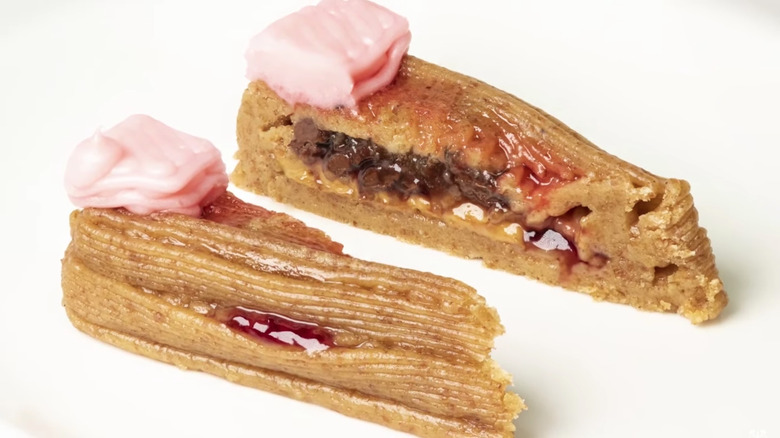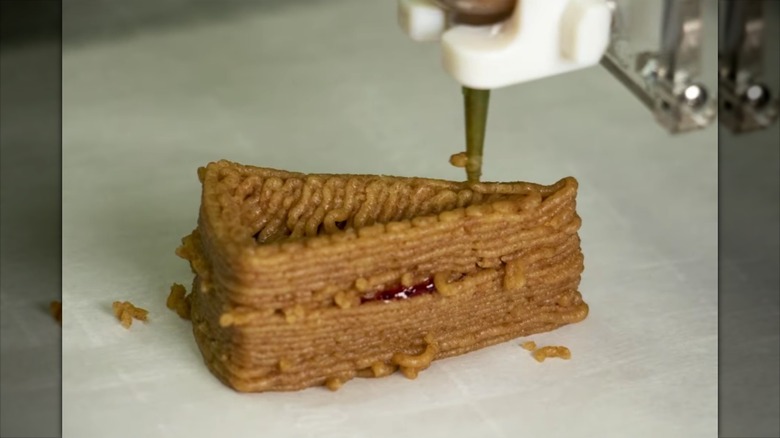Columbia University 3D-Printed A Cheesecake That's Cooked By Lasers
With the advancements in modern science, it can feel like the line between science fiction and reality is increasingly blurry. This is particularly true in the realm of food, as delicious creations continue to be made out of seemingly thin air with the help of innovative 3D printers. At Columbia University, per a study published by NPJ Science of Food, a sweet new milestone has been accomplished with the first successfully printed cheesecake.
Of course, scientists and chefs have been making use of the magic of 3D printers for years now. Some are hoping to use it to solve issues of sustainability, like the companies investing in 3D printing salmon, while others are using it to create impeccably detailed chocolate and sugar confections, like the start-up Sugar Lab. And then there's IKEA, which is currently using a 3D printer to create vegan versions of their addictive Swedish meatballs. But even with this enormous progress in the field, it's been a struggle for scientists to make something as complicated as a multilayer cheesecake with a 3D printer.
So how did the brilliant minds at Columbia University pull off this incredible feat?
The sweet science of baking with lasers
The initial plan was simple. As NPJ Science of Food's study revealed, the engineers used seven store-bought ingredients to create a vegan cheesecake, including peanut butter, Nutella, and strawberry jam. However, every attempt ended up in a sticky puddle, with the liquid center collapsing before it had time to set up. The engineers had to work through a number of scenarios before they solved this gooey quagmire, eventually landing on a two-prong approach: layering and laser cooking.
The layering step insured that the softest ingredient was dammed in by the graham cracker paste exterior, but the true innovation of this printing method lies in its use of lasers. No matter how they layered it, the engineers found that their cheesecake needed a little something extra to hold it all together. Enter the high-heat lasers, which zapped the cheesecake enough to set up the exterior. According to CNN, study co-author Dr. Jonathan Blutinger likens this process to what happens when we microwave or broil our food. After 30 minutes, they had printed the first cheesecake.
Ultimately, this kind of printing is still in its earliest stages. The cost of the equipment — $1000 for the printer itself and over $500 for each hight tech laser — is quite prohibitive. Blutinger is also hoping to add more data to these kinds of projects, like info for recipes and creative freedom for users to create their own recipes.

